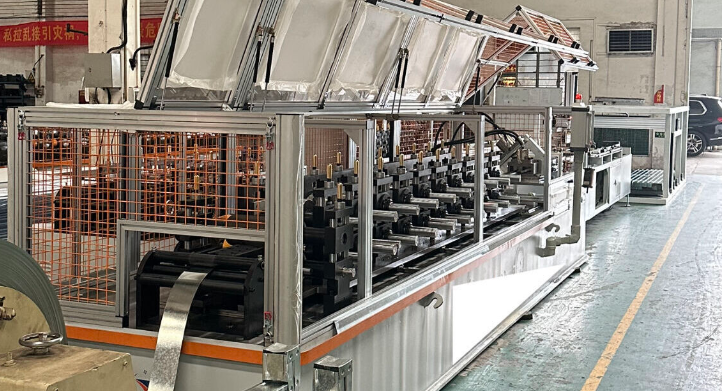
Posted on Monday, September 23, 2024
The speed of a roll forming machine can vary depending on several factors such as the type of machine, the complexity of the profile being formed, and the material being used. On average, a roll forming machine operates at speeds ranging from 30 to 300 feet per minute (9 to 90 meters per minute).
Here’s a breakdown:
Machines designed for more complex profiles or thicker materials typically run at lower speeds to ensure precision and quality.
What profiles can run at high speed
High-speed roll forming machines are typically optimized for simpler and more standardized profiles that don't require intricate forming or additional processing steps. Here are some examples of profiles that can run at high speed:
In general, profiles that are straightforward, with minimal bends or non-complex shapes (e.g., without embossing or sharp curves) and use thinner materials are more likely to be run at high speeds.
Machine matcher specialise in matching your roll forming machine requirements with the perfect new or pre owned machine.
We partner with, and represent some of the finest roll forming manufacturers in the market. For more information and a free machine quote please contact us today or view all machines.

Most Popular Roll Forming Machines in the United Kingdom
Posted on Thursday, December 11, 2025
This blog breaks down the five most in-demand roll forming machines in the UK

Can I Finance a Roll Forming Machine?
Posted on Thursday, December 11, 2025
Financing a roll forming machine is easier than most buyers think. Here’s how leases, loans, and payment plans make production affordable.

Roll Forming Machines for Sale in the UK: What Buyers Need to Know Before Purchasing
Posted on Thursday, December 11, 2025
This complete guide explains everything UK buyers must know before purchasing, including machine types, voltage requirements, CE/UKCA compliance

Roll Forming Machines for Sale in the USA: What Buyers Need to Know Before Purchasing
Posted on Wednesday, December 10, 2025
This guide explains everything U.S. buyers need to know before purchasing a roll forming machine, including machine types, pricing, voltage
Copyright 2025 © Machine Matcher.